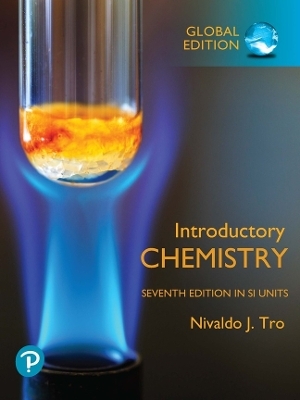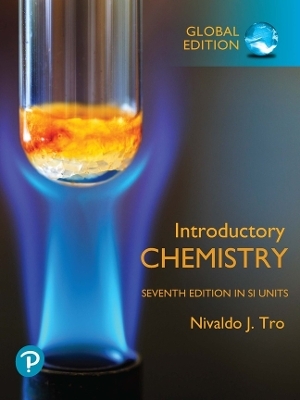
Handbook of Chemoinformatics – From Data to Knowledge
Wiley-VCH Verlag GmbH (Hersteller)
978-3-527-61827-9 (ISBN)
- Keine Verlagsinformationen verfügbar
- Artikel merken
This book offers everything chemists and other scientists need to know about this developing field - from data to knowledge. The "Handbook of Chemoinformatics" is the first reference work to be exclusively devoted to this exciting new area, and will set the standard as the premier information source for the next decade. Edited by Johann Gasteiger, the four-volume handbook contains in-depth contributions from top authors from around the world, with the content organized into chapters dealing with the representation of molecular structures and reactions, data types and databases/datasources, search methods, methods for data analysis as well as applications. In addition, an accompanying textbook for students will be available, published separately but with cross-references to this set.Johann Gasteiger is the recipient of the 1991 Gmelin-Beilstein Medal of the German Chemical Society for Achievements in Computer Chemistry, and the Herman Skolnik Award of the Division of Chemical Information of the American Chemical Society (ACS) in 1997.
Johann Gasteiger is the recipient of the 1991 Gmelin-Beilstein Medal of the German Chemical Society for Achievements in Computer Chemistry and the Hermon Skolnik Award of the Division of Chemical Information of the American Chemical Society (ACS) in 1997.
VOLUME 1.Foreword.Preface.Contributors.I: Introduction.I.1 The Scope of Chemoinformatics (Johann. Gasteiger).I.2 A History of Chemoinformatics (Peter Willett).II: Representation of Chemical Compounds.Introduction.II.1 Representation of Molecular Structures?Overview (John M. Barnard).II.2 Chemical Nomenclature and Structure Representation: Algorithmic Generation and Conversion.II.3 SMILES ? A Language for Molecules and Reactions (David Weininger).II.4 Graph Theory in Chemistry (Ovidiu Ivanciuc).II.5 Processing Constitutional Information.5.1 Canonical Numbering and Constitutional Symmetry (Ovidiu Ivanciuc).5.2 Ring Perception (Geoffrey M. Downs).5.3 Topological Structure Generators (Ivan P. Bangov).5.4 Combinatorics of Organic Molecular Structures (David Weininger).II.6 Representation and Manipulation of Stereochemistry (Bernhard Rohde).II.7 Representation of 3D Structures (Jens Sadowski).7.1 3D Structure Generation. 7.2 Conformational Analys is and Searching (Christof H. Schwab).II.8 Molecular Shape Analysis (Jarostaw Polanski).II.9 Computer Visualization of Molecular Models ? Tools for Man-Machine Communication in Molecular Science (Matthias Keil, et al.).III: Representation of Chemical Reactions.Introduction.III.1 Reaction Classification and Knowledge Acquisition (Lingran).IV: The Data.Introduction.IV.1 Data Types (Jarostaw Tomczak).2.1 Quality Control and Data Aanalysis (David E. Booth, et al).2.2 Experimental Design (Mario Marsili).IV.3 Standard Exchange Formats for Spectral Data (Antony N. Davies).IV.4 XML and Its Application in Chemistry (Peter Murray-Rust & Henry S. Rzepa).VOLUME 2.V: Databases/Data Sources.Introduction.V.1 Overview of Databases/Data Sources.V.2 Bibliographic Databases (Andreas Barth).V.3 Databases of Chemical Structures (C. Gregory Paris).V.4 The CAS Information System: Applying Scientific Knowledge and Technology for Better Information (William Fisanick & Eric R. Shively).V.5 The Beilstein Database (Alexander J. Lawson).V.6 Databases in Inorganic Chemistry (Jugen Vogt, et al.).V.7 The Cambridge Structural Database (CSD) of Small Molecule Crystal Structures (Frank H. Allen, et al.).V.8 Databases of Chemical Reactions (Engelbert Zass).V.9 Spectroscopic Databases (Reinhard Neudert & Antony N. Davies).V.10 Databases on Environmental Information (Kristina Voigt).V.11 Patent Databases (Jugen Vogt).V.12 Databases in Biochemistry and Molecular Biology (Alexander von Homeyer & Martin Reitz).V.13 Chemistry on the Internet (Alexei Tarkhov).V.14 Laboratory Information Management Systems (LIMS) (Markus Hemmer).VI: Searching Chemical Structures.Introduction.VI.1 Two-dimensional Structure and Substructure Searching (Jun Xu).VI.2 Current State of the Art of Markush Topological Search Systems (Andrew H. Berks).VI.3 Similarity Searching in Chemical Structure Databases (Peter Willett).VOLUME 3.VII: Calculation of Physical and Chemical Data.Introduction.VII.1 Molecular Mechanics (Harald lanig).VII.2 Quantum Mechanics (Tim Clark).VIII: Descriptors for Chemical Compounds.Introduction.VIII.1 Topological Indices (Ovidiu Ivanciuc).VIII.2 Descriptors from Molecular Geometry (Roberto Todeschini & Viviana Consonni).VIII.3 A Hierarchy of Structure Representations (Johann Gasteiger).VIII.4 Representation of Molecular Chirality (Jo?o Aires-de-Sousa).IX: Methods for Data Analysis.Introduction.IX.1 Inductive Learning Methods.1.1 Machine Learning Techniques in Chemistry (John R. Rose).1.2 Multivariate Data Analysis in Chemistry (Kurt Varmuza).1.3 Partial Least Squares (PLS) in Cheminformatics (Lennart Eriksson, et al.).1.4 Neural Networks (Jure Zupan).1.5 Fuzzy Set Theory and Fuzzy Logic and Its Application to Molecular Recognition (Thomas E. Exner, et al.).1.6 Evolutionary Algorithms and their Applications in Chemistry (Alexander von Homeyer).IX.2 Expert Systems (Markus Hemmer).X: Applications.Introduction.X.1 Prediction of Physical and Chemical Properties.1.1 Octanol/Water Partition Coefficients (Raimund Mannhold).1.2 Quantitative Structure ? Property Relationships (Peter C. Jurs).1.3 Web-Based Calculation of Molecular Properties (Peter Ertl & Paul Selzer).X.2 Structure?Spectra Correlations.2.1 Correlations between Chemical Structure and Infrared Spectra (Paul Selzer).2.2 Correlations between Chemical Structures and NMR Data (Christoph Steinbeck). 2.3 Computer-Assisted Structure Elucidation (Christoph Steinbeck).VOLUME 4.X.3 Chemical Reactions and Synthesis Design.3.1 Analysis of Reaction Information (Guenter Grethe).3.2 Computer-Assisted Synthesis Design (CASD) (Rene Barone & Michel Chanon).3.3 Computer-Assisted Synthesis Design by WODCA (CASD) (M. Pfortner & M. Sitzmann).X.4: Drug Design.4.1 Chemoinformatics and the Quest for Leads in Drug Discovery (Tudor I. Oprea).4.2 QSAR in Drug Design (Hugo Kubinyi).4.3 Comparative Molecular Field Analysis (CoMFA) (Hugo Kubinyi).4.4 3D- and nD-QSAR Methods (Emilio Xavier Esposito, et al.).4.5 High-Throughput Chemistry (Wendy A. Warr).4.6 Molecular Diversity (Michael A. Farnum, et al.).4.7 Pharmacophore and Drug Discovery (Marc C. Nicklaus).4.8 De-Novo Design Systems (A. Peter Johnson).4.9 The Docking Problem (Christoph Sotriffer, et al.).4.10 From Structural Genomics to Drug Design: Knowledge Discovery in Crystallographic Databases to Assist Lead Discovery and Optimization (G. Klebe).X.5: Chemoinformatics/Bioinformatics.5.1 Prediction of Protein Structure Through Evolution (Burkhard Rost, et al.).5.2 Sequence and Genome Bioinformatics (H. Werner Mewes).XI: Future Directions (J. Gasteiger).Index.
| Erscheint lt. Verlag | 5.5.2008 |
|---|---|
| Verlagsort | Weinheim |
| Sprache | englisch |
| Maße | 180 x 256 mm |
| Gewicht | 4720 g |
| Themenwelt | Naturwissenschaften ► Chemie |
| ISBN-10 | 3-527-61827-9 / 3527618279 |
| ISBN-13 | 978-3-527-61827-9 / 9783527618279 |
| Zustand | Neuware |
| Haben Sie eine Frage zum Produkt? |
aus dem Bereich


